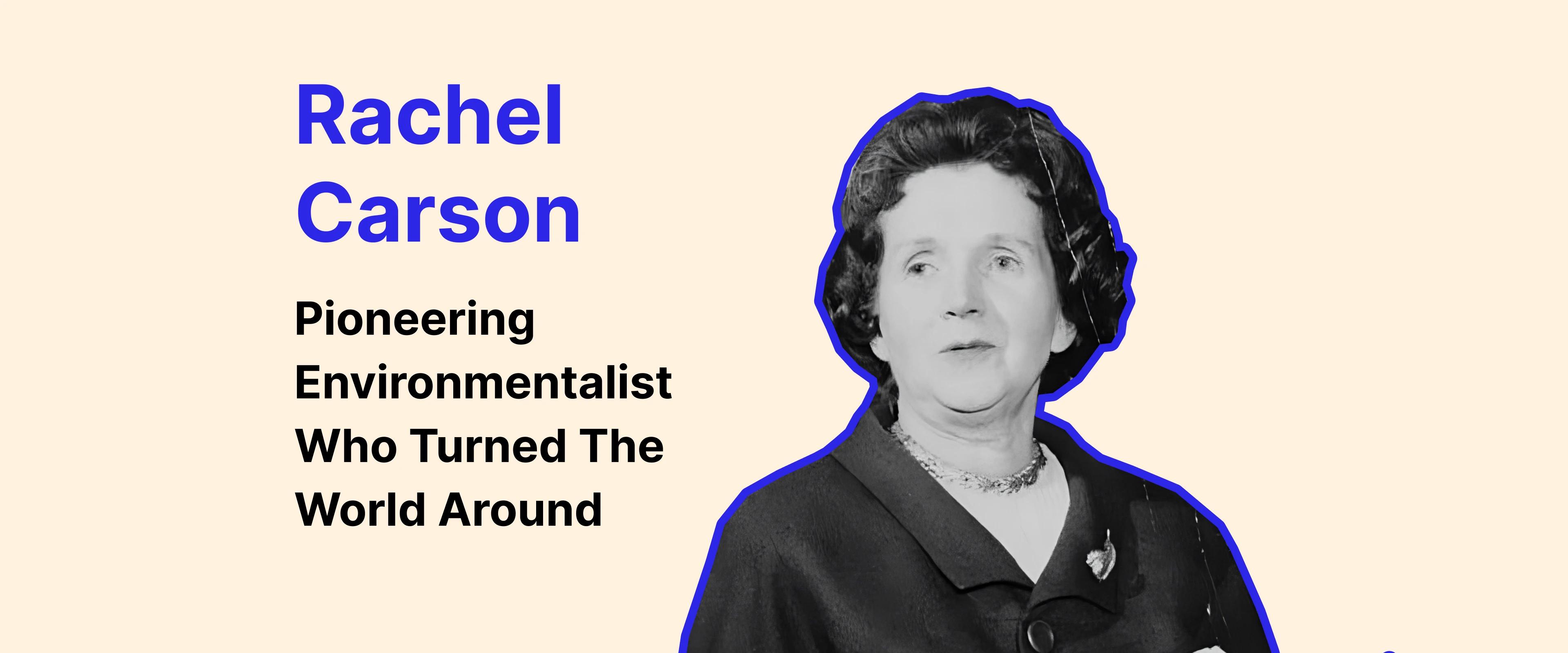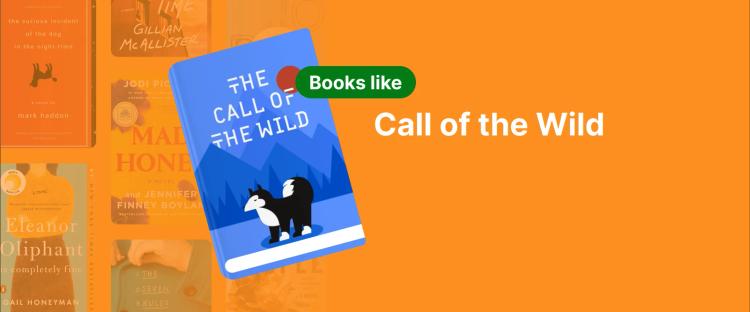Rachel Carson was a marine biologist-conservationist and author whose groundbreaking 1962 book 'Silent Spring' exposed the dangers of synthetic pesticides like DDT. This author and her work launched the modern environmental movement, including the Earth Day celebration. This article celebrates the global impact of 'Silent Spring' and Rachel Carson's enduring legacy.
Rachel Carson's key contributions:
The National Centers for Environmental Information calls Rachel Carson a pioneer of "The Great Environmental Awakening" of humans connecting to the natural world. Her work helped shape the modern environmental movement.
Exposed pesticide dangers in ‘Silent Spring,’ influencing environmental policy.
Pioneered the U.S. ban on DDT and inspired global pesticide regulation.
Catalyzed the founding of the EPA to protect the environment.
Popularized ecological awareness, making science accessible to the public.
Sparked Earth Day celebrations and modern environmental activism.
How Rachel Carson changed the way we treat and protect the natural world
Rachel Carson, a remarkable biologist and creative writer, started the environmental movement as we know it today. She turned complicated science into writing able to touch people's hearts. The publication of Carson's 'Silent Spring,' met by a heavy criticism from John F. Kennedy's administration, transformed the global perspective on sustainable future of nature.
"We stand now where two roads diverge. But unlike the roads in Robert Frost's familiar poem, they are not equally fair. The road we have long been traveling is deceptively easy, a smooth superhighway on which we progress with great speed, but at its end lies disaster. The other fork of the road — the one less traveled by — offers our last, our only chance to reach a destination that assures the preservation of the Earth."
The very title, 'Silent Spring,' paints a grim picture of springtime without the cheerful sounds of birds and life, reminding us of the dangers of harming our environment and how everything on Earth is interconnected. Today, Carson's work remains a guiding influence for nature advocates dedicated to promoting an eco-friendly attitude toward our planet as a way to save it.
Rachel Carson's early life, education, and career
Rachel Louise Carson was born on May 27, 1907, in Springdale, Pennsylvania, a small town near Pittsburgh. Her parents encouraged the young explorer to connect with rural nature and use it as a wildlife refuge to hide and rest. This early passion for the outside world would later combine with her love for writing, making Carson an emphatic advocate for environmental protection.
Rachel completed her high school education in Parnassus and then went on to attend the Pennsylvania College for Women (now Chatham University). At first, she wanted to study English because of her love for storytelling, but switched to biology.
The future author pursued further studies at Johns Hopkins University in Baltimore, where she earned her Master's degree in zoology — an impressive feat for a woman in a time when women barely had voting rights.
When the Great Depression hit, Rachel had to put her dream of earning a doctorate on hold to support her family. In 1935, she began a 15-year job with the US Bureau of Fisheries, later the US Fish and Wildlife Service. Starting out by writing radio scripts about marine life, the future activist showed a talent for making science enjoyable and simple for everyone.
Swiftly moving up the career ladder, Carson got promoted to the editor-in-chief of all the bureau's publications. Over the years, she continued studying marine biology and describing ocean life. Her first book, 'Under the Sea-Wind' (1941), was followed by the record-breaking 'The Sea Around Us' (1951), which won the National Book Award, and 'The Edge of the Sea' (1955).
These titles established Rachel Carson's name as a prominent science author and gave her the money to focus on synthetic insecticide research for 'Silent Spring,' published shortly before she died in 1964 in Silver Spring, Maryland.
How 'Silent Spring' was written: Carson defied gender prejudices and cancer
The story behind Rachel Carson's most famous book, 'Silent Spring,' begins with a mix of growing scientific concerns based on the evidence of wildlife dying and the writer's personal experiences.
In January 1958, Carson received a letter from her friend, Olga Owens Huckins, describing a heartbreaking scene of dead birds scattered around her Massachusetts home. All because of DDT (Dichlorodiphenyltrichloroethane), a pesticide sprayed for mosquito control.
What happened deeply affected Carson and inspired her to investigate the broader environmental damage that chemical pesticides trigger. Since that moment, the wheel of history has turned around. In 1957, the US Department of Agriculture started a program to get rid of fire ants by spraying pesticides over public and private lands.
Hearing that reignited Carson's efforts to collect evidence on how pesticides harm nature and humans.
"Why should we tolerate a system that has built-in safeguards for industry, regardless of cost to human health or the environment, when we have no comparable body of law or regulation that is people-oriented?"
Carson's name was already on everyone's lips, giving her access to more government-protected documentation. The new information helped her build a stronger case to counter hostile opposition from the chemical industry.
Bringing 'Silent Spring' to life took a sad turn when Carson learned she had breast cancer. She worked hard to keep it a secret, to avoid hearing that "her emotions influence her work," instead of relying on science.

Who helped Carson to publish 'Silent Spring'?: Freeman, Mifflin, and Woods Hole
Our heroic advocate for nature was not left alone on her journey. Carson's letter to Dorothy Freeman reveals how the two became trusted companions while she worked on 'Silent Spring.' Another like-minded activist, Houghton Mifflin, crafted an insightful review for The New Yorker to assist with the book's initial promotion, which fueled public interest and intense discussions.
Carson's time at the Woods Hole laboratory further broadened her vision of how fragile our natural world is. While confronting a multi-billion-dollar industry, she relied on her earlier 'The Sea Around Us' and 'The Edge of the Sea' works. In these books, she explains marine ecosystem as one mechanism, showing how one small change can ripple through the entire web of life.
"The most alarming of all man's assaults upon the environment is the contamination of air, earth, rivers, and sea with dangerous and even lethal materials. This pollution is for the most part irrecoverable; the chain of evil it initiates not only in the world that must support life but in living tissues is for the most part irreversible."
This deep understanding of how nature operates helped her make convincing points in 'Silent Spring,' linking the harmful effects of pesticide spraying to serious ecological concerns. Such passion and keen insight turned 'Silent Spring' into a powerful message for environmental awareness. This book changed how people view pesticides forever.
What is 'Silent Spring' about?: Pesticides harming nature and human health
Following its publication, 'Silent Spring' has sort of opened a Pandora's box, revealing more and more alarming facts about how dangerous synthetic pesticides are and how they ruin nature's ecosystems. Carson points out that these chemicals, a weapon in human hands, can disrupt the biological balance, affecting insects, birds, fish, and all animals.
"Only within the moment of time represented by the present century has one species — man — acquired significant power to alter the nature of the world."
Carson introduces the idea of "biocides," which emphasizes that these harmful substances can have far-reaching effects on living creatures. She explains concepts like bioaccumulation and biomagnification, illustrating how persistent elements like DDT build up in the food chain and pose risks to top predators, including humans.
"These sprays, dusts, and aerosols are now applied almost universally to farms, gardens, forests, and homes — nonselective chemicals that have the power to kill virtually all insects, 'good' and 'bad,' to still the song of birds and the leaping of fish in the streams, to coat the leaves with a deadly film, and to linger on in soil, water, and food."
One specific example of chemical danger she mentions is when bird eggshells get thinner as the pesticides disrupt normal calcium metabolism, a key element in eggshell formation. Carson also explains that being around these chemicals can cause people neurological brain damage and oncological diseases.
The author warns about a troubling cycle that only makes things worse: farmers caught in a "pesticide treadmill" using more toxic, risky options as pests become resistant to these chemicals.
"A Who's Who of pesticides is therefore of concern to us all. If we are going to live so intimately with these chemicals eating and drinking them, taking them into the very marrow of our bones — we had better know something about their nature and their power."
Notably, the writer-biologist doesn't call for an outright ban on pesticides. Instead, she advocates for a thoughtful and responsible approach to pest management, encouraging research and the development of safer alternatives. Her message is clear: we should not fail the next generation tomorrow by failing to protect the environment now.
Public and government react to 'Silent Spring': Hearings at Congress and establishment of the EPA
The publication of 'Silent Spring' in 1962 marked the start of an ongoing marathon of opinions exchanged between the public, lawmakers, and scientists. The book instantly made it to the New York Times bestseller list.
To retaliate for such a high demand, the chemical industry owners launched literally a smothering campaign to discredit Carson, accusing her of being "overly emotional, hysterical, and not fully grounded in facts." However, the scientist didn't falter, passionately calling for more decisive federal regulations.
"How could intelligent beings seek to control a few unwanted species by a method that contaminated the entire environment and brought the threat of disease and death even to their own kind?"
The government reacted quickly. President Kennedy assigned his Science Advisory Committee to investigate Carson's claims. Their 1963 report backed her findings and led to historical congressional hearings on pesticide use. The unyielding advocate of the living world went to Washington, D.C., and gave her testimony.
"There was once a town in the heart of America where all life seemed to live in harmony with its surroundings... Then a strange blight crept over the area and everything began to change."
After years of dedicated and relentless research, her hard work finally paid off, bringing about a significant political turning point: the creation of the Environmental Protection Agency (EPA) in 1970.
This is one of the many reasons why 'Silent Spring' deserves every praise it gets. It has become a catalyst for the modern environmental movement. Thanks to Carson's enthusiasm and all her supporters, people from all continents unite to celebrate Earth Day every April. It symbolizes Carson's lifetime achievements and pays tribute to her dedication to fighting chemical pollution.

How 'Silent Spring' legacy fuels modern environmentalism
'Silent Spring' has played a pivotal role in shedding light on activists' environmental concerns and policymakers' decisions. Carson insisted that we all have the right to know about ecological dangers affecting our existence. She encouraged inquiring government offices and business owners on how their actions put the environment and public well-being at risk.
Carson's poetic-academic style makes her messages deeply moving and educational. Following the author's lead, her audience embraces wildlife as a refuge that needs protection to stay safe for those living in it now and in the future.
"Those who contemplate the beauty of the Earth find reserves of strength that will endure as long as life lasts. There is something infinitely healing in the repeated refrains of nature — the assurance that dawn comes after night, and spring after winter."
Nowadays, environmental activists still draw inspiration from Carson's groundbreaking work, tackling issues she highlighted many years ago. For instance, the Silent Spring Institute is researching how pollutants in our environment are linked to breast cancer, showing that Carson's warnings about chemicals and health are just as important now as they were then.
Around the globe, environmental groups use Carson's findings to push for heavier penalties for pesticides and chemical use. Her work continues to shine as a dramatic reminder of how vital it is to maintain scientific ethics and engage the public simply because every action matters.
Rachel Carson's enduring message today: Stop ecocide and save future generations
Carson's message encourages us to rethink how we relate to the environment and take bold actions to preserve the biodiversity of life and a healthier ecology. The massive use of DDT has already distorted ecosystems in ways people didn't anticipate, accelerating the decline in animal populations.
"The real wealth of the Nation lies in the resources of the earth — soil, water, forests, minerals, and wildlife. To assure their continuance is our first great task."
The legacy of Rachel Carson encourages us to see the bigger picture when it comes to environmental issues. Current greenhouse emissions are causing drastic changes in weather and air temperature, while high pollution index and climate shifts heighten the biodiversity crisis. Many species are facing extinction because their habitats are being destroyed.
"If the Bill of Rights contains no guarantee that a citizen shall be secure against lethal poisons distributed either by private individuals or by public officials, it is surely only because our forefathers, despite their considerable wisdom and foresight, could conceive of no such problem."
Today, we continue fighting war-induced ecocide, massive wildfires, and other catastrophic events triggered by climate change and people's irresponsibility. Forging more substantial connections with the flora and fauna can drive everyone — whether an individual, community, government body, or business — to take full responsibility for saving this planet we all live on.
Resources to learn more about the author: Rachel Carson Homestead and 'Witness for Nature'
The Rachel Carson Homestead in Springdale, Pennsylvania, is more than a historical site. It's where the future aquatic biologist first experienced the sense of wonder that molded her into one of the greatest nature writers and conservationists.
"The 'control of nature' is a phrase conceived in arrogance, born of the Neanderthal age of biology and philosophy, when it was supposed that nature exists for the convenience of man."
The Homestead encourages people to adopt simple yet eternal values through various educational programs. Linda Lear's documentary "Rachel Carson: Witness for Nature" shows the full spectrum of Rachel Carson's life story and her commitment to the environment, even during the grim years of World War II.
The Homestead and the film about Carson help us see how her story relates to today's environmental problems. They remind us that one person can make a difference and encourage us to help take care of the shared planet we inhabit. Visit ncei.noaa.gov for more information.
Let's study the life of leaders and advocates with Headway
Through her lifelong dedication, Rachel Carson made a lasting impact on science, literature, and public health, inspiring many to cherish the natural world and be its guardians. Her book 'Silent Spring' helped many understand nature better and learn to value our environment. Her approachable style gave a fresh start to the national-level talks about environmental care rules.
Despite pressure from gender inequality, government opposition, and fighting to keep her cancer under control, Carson persevered to see a policy turning point, including the DDT ban and the start of the Environmental Protection Agency.
If Carson's work inspires and motivates you to act, you are welcome to download the Headway App for daily insights from the authors covering climate and nature protection. Dive into subjects on popular lists like "17 Timeless Books Like Walden for Nature Lovers," "15 Best Climate Change Books," and "6 Best Conservation Books."
Celebrate Earth Day by becoming a dedicated learner and doing your part to make this world a better place.
Frequently Asked Questions
What was Rachel Carson's most famous quote?
One of her most famous quotes perfectly captures the heart of 'Silent Spring': "The 'control of nature' is a phrase conceived in arrogance, born of the Neanderthal age of biology and philosophy, when it was supposed that nature exists for the convenience of man."
What does DDT stand for?
DDT stands for dichlorodiphenyltrichloroethane, a strong human-made insect killer that was widely used in the past to fight bugs that spread diseases such as malaria and typhus.
What happened to Rachel Carson's son, Roger Christie?
In 1957, when she was 50, Rachel Carson took in her 5-year-old grandnephew, Roger Christie, who later became her adopted son. For about a year, Carson also took care of Roger's birth mother until she died because of an illness. He is currently the Chairman of the Rachel Carson Council's Board of Directors.
Why was Rachel Carson a good leader?
Rachel Carson was a remarkable leader who addressed critical environmental issues while standing up to government and powerful companies. She always backed up her work with deep research and communicated complex ideas in simple terms. Her honesty and perseverance inspired millions to appreciate nature more and reflect on technology's role in our lives.
What is the Rachel Carson theory?
The "Rachel Carson theory" highlights her strong beliefs about caring for the environment, protecting Earth, and being careful with chemicals. These ideas are crucial for ensuring a healthier and cleaner environment.
What are some interesting facts about Rachel Carson?
Rachel Carson won her first writing contest at eleven.
She worked for fifteen years as a marine biologist with the US Bureau of Fisheries, reflecting her passion for the ocean.
Her work was instrumental in launching the modern environmental movement, leading to the banning of DDT in the US.
Carson received numerous posthumous honors, including the Presidential Medal of Freedom.













